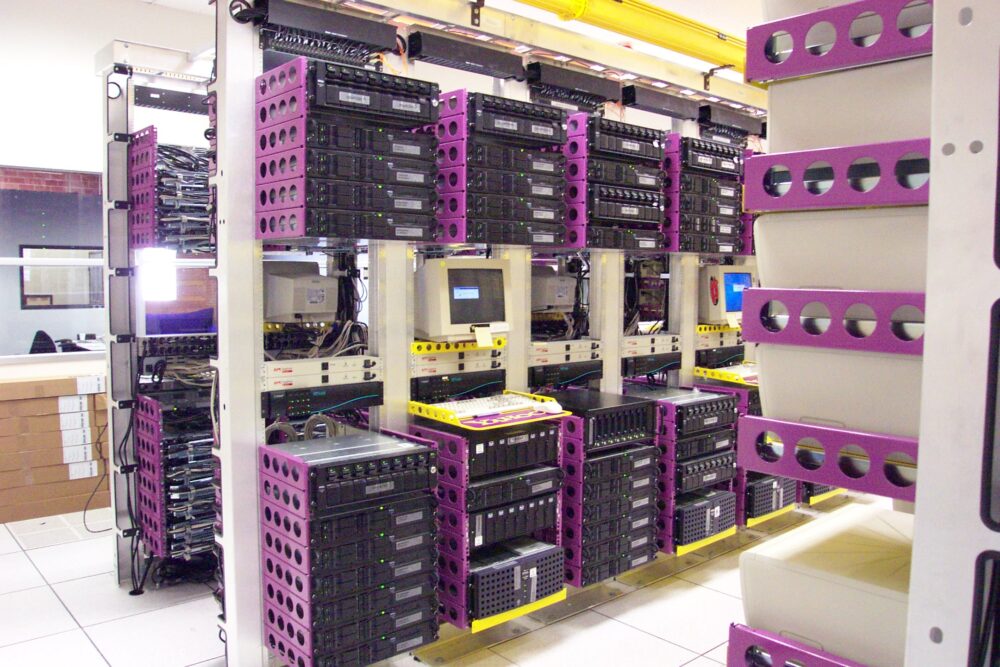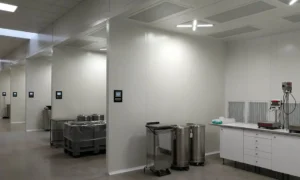Network systems serve as the “brain” of all modern businesses and enterprises. Artificial intelligence is used to process large volumes of datum and cope with complicated duties and calculations quicker than humans. Thus, they stand behind any company or institution.
A standard IT system can comprise up to several dozen or hundred devices. How to store them to achieve effective space allocation and occupy a little place? Server racks are used for this purpose. These are special metal constructions for housing and mounting IT hardware. Racks guarantee secure and durable storage of system components and provide the best ergonomics due to multi-tier structures.
If you need reliable quality rack enclosures, visit the SysRacks. Sysracks is a trusted distributor of data center furniture. The catalog of models is wide and diverse. Managers assist in selecting suitable solutions for clients’ needs.
What Is Rack Mounting Depth?

Source: racksolutions.com
The rack server depth refers to the area in which system technicians can mount shelves and rails for further equipment installation. The dimension is measured from the front post up to the rear upright (door) of a server cabinet.
Understanding the rack server depth is crucial when it comes to ensuring compatibility with your equipment and maximizing the available space within a server cabinet. This dimension determines how much room you have to install additional shelves, rails, or other accessories for your equipment.
When considering the rack server depth, it’s important to factor in the length of the servers you plan to install, including any protruding components such as handles or cables. It’s recommended to leave some extra space between the rear of the server and the cabinet door to allow for proper airflow and cable management.
Common Furniture Depths
Note that most models have adjustable rear sides, which means that it is possible to customize the cabinet capacity to your demands. Yet, there are particular standards for cabinet depths set by major manufacturers.
The common rack depth used to range between 19” to 24”. However, nowadays, standards have changed a bit to accommodate modern hardware. Today, the standard rack depth is close to 29”. Famous producers offer the following indicators according to OEM standards.
- HP – 29 1/8”;
- Dell – 28 7/8”;
- IBM – 28 ½.
If the rack mount depth is more than 29”, there will be more space for accessories and cable routing.
4-Post Cabinet Mount Depth

Source: racksolutions.com
These models have 4 uprights to support hardware. They are connected by mounting rails. To measure the cabinet capacity, the staff should consider the distance between the rear and front sides of the cabinet. 29” is the most popular indicator for such models. The popularity of this depth is due to the ability to house all active devices and accessories. Yet, system administrators can adjust it, if they need to get extra space for cables and air circulation.
2-Post Rack Mount Depth

Source: racksolutions.com
If compared to the previous class of server furniture, these models have only 2 posts to carry hardware. So, here the so-called “Upright depth” is taken into account. The common rack unit depth is 3” in this case. Sometimes, it is possible to find 6” and 5” capacities on the market. These racks are commonly used in data closets and back offices.
When dealing with 2-upright models, special mount kits are used to install and fasten servers and other components. Devices are installed in the flush or center mount.
Mounting Hardware
When fastening hardware to the cabinet frame, several options can be used. These include:
- The frame itself – 2-upright racks have tech holes that are designed for attaching equipment to posts.
- Shelves – These are solid platforms mounted to the frame for providing more space for equipment placement. Fixed and sliding models are available.
- Rails – They are fastened to posts only and do not occupy space inside the rack. These L-shaped constructions are equipped with tech holes for installing devices.
Suitable solutions are chosen, depending on the number of devices, cabinet construction, demands, and ease of access.
Popular Server Furniture Sizes

Source: safetrolley.com
In addition to the depth, other rack mount server dimensions are worth consideration. Thus, the most popular rack size has the following dimensions:
- 24 inches wide – This width is standard since it allows for fitting most types of network components. Most manufacturers produce 24-inch-wide cabinets to guarantee that they will fit customers worldwide and be able to accommodate all types of devices.
- 42 inches deep – This dimension allows for accommodating hundreds of components. The depth is spacious enough for easy access and maintenance, wire management, and system cooling.
- 74 inches tall (42U cabinet) – It is a huge box that accommodates hundreds of devices. It is the biggest model of server furniture.
While the depth is adjustable, so it is not crucial to calculate it, other dimensions require particular attention. Improper choice can lead to multiple problems, such as system malfunction and downtime, and extra expenses on buying another model.
Note that when selecting a suitable rack size, it is important to keep into account multiple criteria. For example, foresee the necessity to expand your server system in the future. Leave space for routing cords and the installation of accessories. Thus, the cabinet should be spacious enough. If you make a 3D layout of a future setup, you’ll eliminate the number of mistakes when choosing a suitable rack size. Another important rule is to place devices loosely to ensure sufficient airflow between them. The air will cool down devices and remove heat from the enclosure.
The rack depth is one of three main dimensions for server room furniture. Yet, it is adjustable in most cases, so users can set the needed depth according to the required inner space. The most popular depth is around 29”. This indicator is enough to place the main system components. However, if you need more space for more accessories or tools, about 30” is possible. Such enterprises as HP, Dell, and IBM set their standards for depth. Other dimensions are also important. Moreover, they require even more attention and thorough calculations.


















